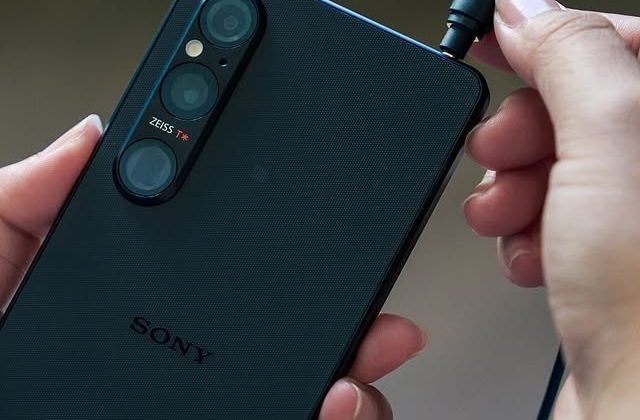Lessons from Sony’s Struggles in the Smartphone Industry: What Entrepreneurs Can Learn

Lessons from Sony’s Struggles in the Smartphone Industry: What Entrepreneurs Can Learn. Sony is a powerhouse in consumer electronics, known for its innovation in gaming, cameras, and televisions. However, despite its technological prowess, the company struggled to establish itself as a dominant player in the smartphone industry. Once considered a serious competitor to brands like Apple and Samsung, Sony’s Xperia line gradually lost relevance, failing to capture a significant market share.
Understanding where Sony went wrong provides valuable lessons for entrepreneurs and businesses looking to compete in highly competitive industries. From strategic missteps to marketing failures, Sony’s journey in mobile offers a case study in adaptation, resilience, and the importance of understanding consumer behavior.

Overconfidence in Brand Prestige
Sony entered the smartphone market with a strong brand reputation. The company assumed that its existing prestige in electronics would seamlessly translate to mobile success. While Sony Xperia devices boasted high-quality cameras, premium materials, and waterproofing before competitors, they were often priced higher than similarly specced alternatives. Additionally, Sony focused on premium positioning without catering effectively to the mid-range segment, where much of the smartphone market’s growth was occurring.
Lesson: Brand strength in one sector doesn’t guarantee success in another. Entrepreneurs must assess market dynamics and consumer expectations before leveraging an existing reputation.
Lack of a Clear Differentiation Strategy
Unlike Apple, which defined the iPhone through its ecosystem and user experience, or Samsung, which excelled in display technology and aggressive marketing, Sony lacked a clear unique selling proposition (USP). Xperia devices often blended into the market rather than standing out.
Sony’s emphasis on high-end features didn’t translate into mass adoption, as competitors like OnePlus and Xiaomi disrupted the market with feature-rich yet affordable alternatives. Furthermore, Sony failed to leverage its expertise in cameras and audio to create an ecosystem that could rival competitors.
Lesson: A business must have a strong differentiator. Without a clear reason for customers to choose a product over others, even well-made products can fail.

Failure to Adapt to Market Trends
Sony was slow to react to key industry shifts. For instance:
- The company initially dismissed the shift towards larger smartphone screens, sticking to compact designs while consumers increasingly preferred bigger displays.
- Sony’s user interface and software failed to offer a compelling alternative to Android skins from Samsung or Google’s stock Android experience.
- The Xperia lineup suffered from irregular release schedules and inconsistent branding, making it difficult for consumers to keep up with Sony’s offerings.
Lesson: Businesses that fail to adapt to changing trends risk obsolescence. Market research and consumer feedback should drive product development and strategy.
Poor Marketing and Distribution Strategies
Sony’s marketing efforts in the smartphone segment were weak compared to industry giants. While Apple and Samsung invested heavily in brand storytelling, ecosystem integration, and carrier partnerships, Sony’s approach was fragmented.
Additionally, Sony’s smartphones were often difficult to find in major carrier stores, limiting their reach. A lack of strategic retail partnerships and weak online presence further restricted growth. Unlike Samsung and Apple, which built strong relationships with mobile carriers, Sony relied more on direct sales and niche retailers, which limited its visibility in many markets.
Lesson: Even a great product needs strong marketing and distribution. Entrepreneurs should prioritize accessibility and brand awareness to drive sales.
Lessons for Entrepreneurs from Sony’s Smartphone Failure
- Leverage brand strength strategically – Don’t assume success in one industry will transfer to another without thorough market research.
- Find a strong differentiator – Clearly define what sets your product apart from competitors.
- Stay adaptable – Monitor trends and adjust product strategy accordingly.
- Invest in marketing and distribution – Visibility is key to consumer adoption.
- Prioritize consumer needs over internal prestige – Designing for real customer demands, rather than internal innovation pride, is crucial.

Conclusion: Turning Failure into Learning
Sony’s struggle in the smartphone market highlights the challenges of competing in a rapidly evolving industry. While the brand remains influential in other tech sectors, its failure to compete effectively in mobile underscores the importance of adaptability, differentiation, and strong marketing execution.
For entrepreneurs, the key takeaway is simple: understanding your market, evolving with industry trends, and delivering clear value to consumers are essential for long-term success. Failure isn’t the end—it’s an opportunity to learn, pivot, and build a stronger business for the future.




